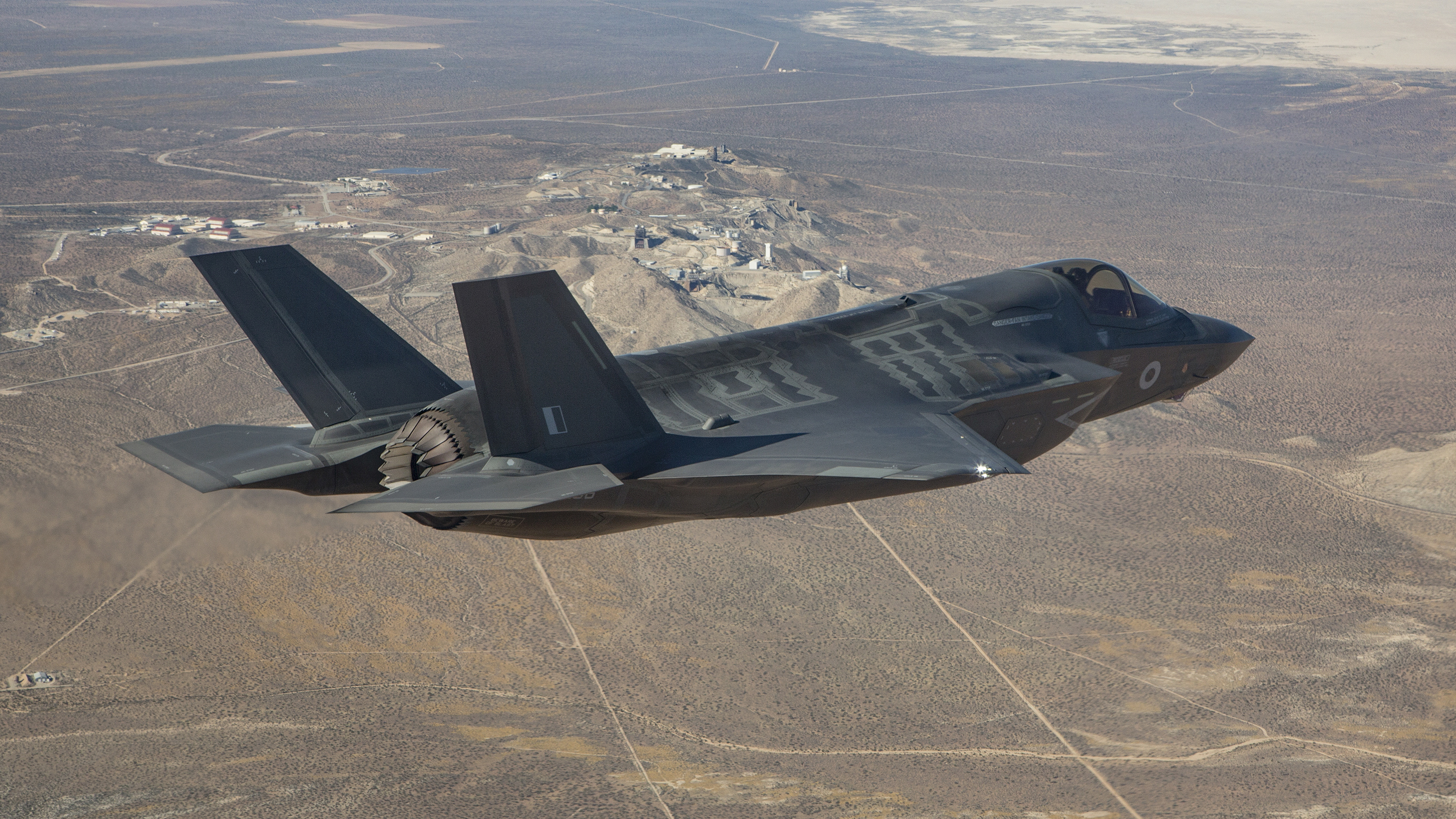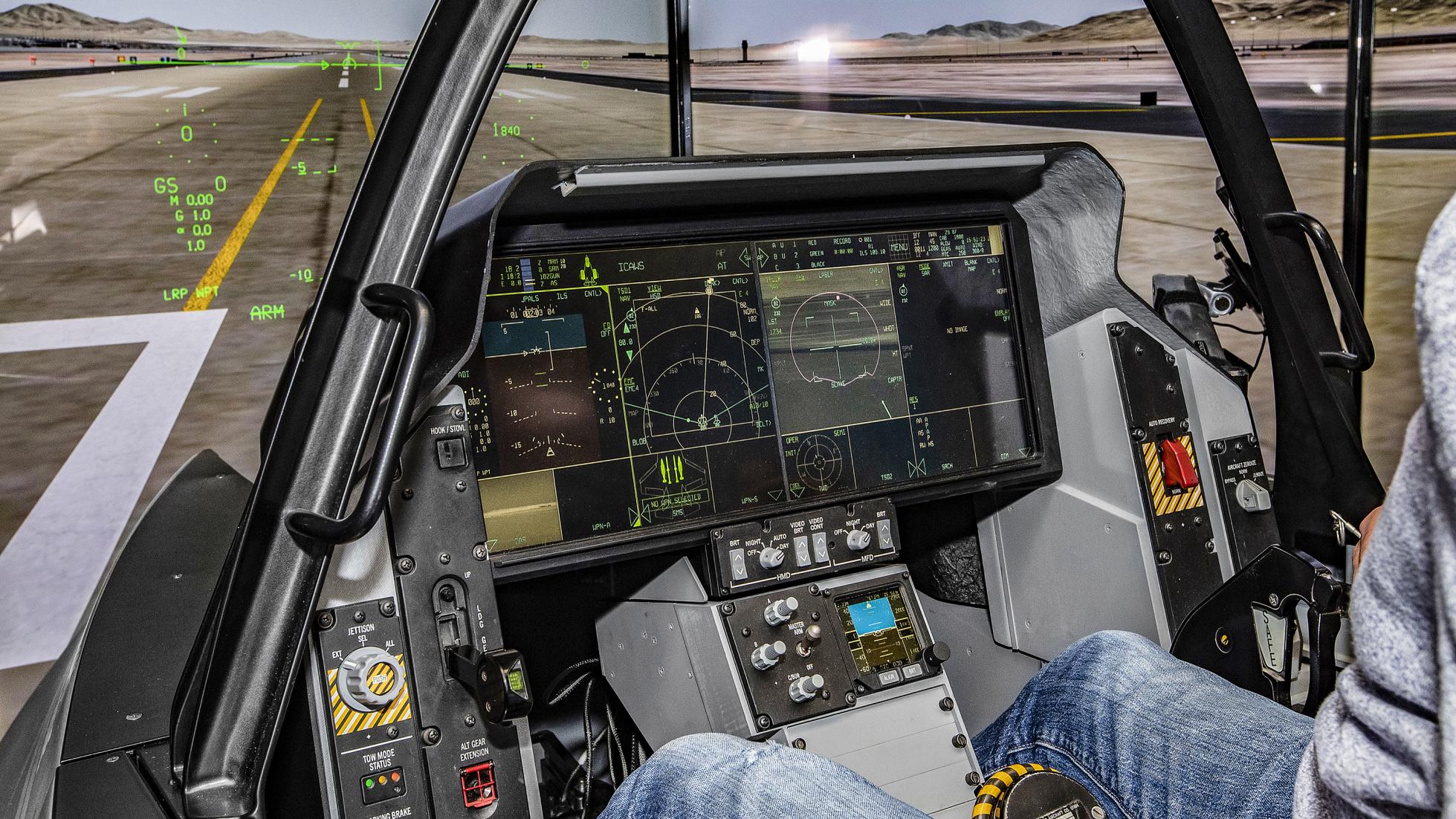
Lockheed Martin F-35 Lightning review
Interior
What is it like on the inside?
We can’t actually show you the insides of an F-35 – that’s classified, somewhat inevitably – but we’ve had a poke around a simulator and a mock-up cockpit, which the F-35’s engineering team practice fixing the ejector system on (yikes). It was enough of a glimpse to confirm, like in the world of cars, the screens are taking over, scooping up the functions previously served by oodles of buttons and rationalising them into customisable displays.
And the physical controls that do remain? They’re largely just there to stop us fleshy old-fashioned ‘people’ thingies freaking out. “It won’t let you fly into the ground or into another jet, it’ll just say ‘No! Now you go and do your human things you need to do’,” says Jim.
“It’s just breath-taking, it really is. The controls only move for human comfort, to help us comprehend it. They’re only really there because that’s how pilots have always been trained.”
While the head-up display made famous by jets has now drip-fed down into even the smallest of cars, the F-35 will burst the bubble of any pub boasts: it’s ditched HUD and now feeds all the key displays into a £250,000 helmet, which is bespoke-fit for each pilot.
“Fitting a HUD in modern jets is so expensive, so complex, and it’s really heavy,” says Jim. “The helmet is arguably a tenth of the cost of a HUD. And I’m no longer constrained to seeing what’s in each bit of the cockpit, I’ve got all the displays wherever I look.
“As for the physical controls and displays, the team worked incredibly hard so it is incredibly intuitive. There are two sticks with 18 buttons each. It takes eight hours a day for eight weeks to learn it all to the point it’s natural.”
Featured







